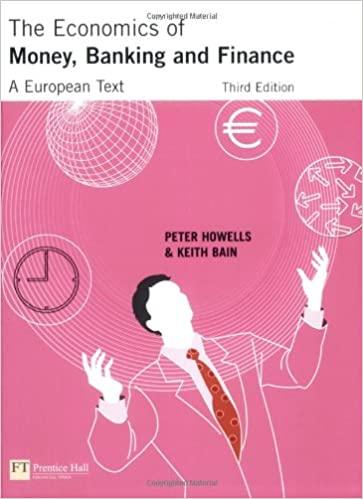Question
On October 5, 1998, Anthony Ng, the general manager of Kowloon Development Co. Ltd., was reviewing his notes describing a possible property acquisition. Kowloon Development
On October 5, 1998, Anthony Ng, the general manager of Kowloon Development Co. Ltd., was reviewing his notes describing a possible property acquisition. Kowloon Development was a property investment and development company located in Hong Kong, where development projects often involved more than a billion Hong Kong dollars, leaving little room for error or uncertainty. Although the Hong Kong property market had declined more than 50 per cent since its peak in June 1997 due to the well publicized Asian financial crisis, Ng was convinced that the market had bottomed out by the fall of 1998. He had convinced the companys board of directors that it was now time to look for appropriate investment opportunities. Early the previous week, Ng had been approached by a real-estate agent who proposed a new development project for possible investment by Kowloon Development. The project was located in the mid-level district of Hong Kong, with a total site area of 16,000 square feet. Although the project was attractive, there were a number of associated uncertainties that complicated Ngs decision about whether to recommend investment. However, he knew that he would need to make his decision quickly, in order to be able to present it to his board of directors on October 8.
THE PROPERTY
The current property owner, Teng Lo Development Co., Ltd., had listed the property three months earlier at an asking price of HKD 400 million. According to the property agent, Teng Lo had purchased the property for HKD 550 million during the peak of the real estate boom using HKD 250 million in cash, with the balance of the purchase financed through an unsecured loan from a Japanese bank. As the Asian financial crisis deepened, many Japanese banks had tightened their lending policies or even closed their Hong Kong offices. As a result of these conservative measures, Teng Lo had been unable to extend its credit facility with the bank, and was forced to sell the property to settle its outstanding bank loan. The real estate agent who had approached Ng with this investment opportunity indicated that he believed Teng Lo was desperate to sell the property and would likely accept a purchase offer of HKD 350 million.
ESTIMATED SELLING PRICE
Ng had quickly asked two independent property surveying firms to provide estimated selling prices for the Teng Lo property under two different sets of assumptions. First, Ng wanted to know the likely selling price for the property in two years assuming that no construction was undertaken. Second, he also wanted information about a likely selling price in two years if his company developed the property. Both surveying firms First Pacific Davies and Vigers had strong reputations in the Hong Kong real estate market, and Ng had already decided to average the two firms estimates. The total cost of appointing the two firms was HKD 0.5 million. The survey firms selling price estimates were determined by multiplying the area of the site by the estimated selling price per square foot, and then multiplying this number by the propertys development ratio.1 The Teng Lo property had a development ratio of 5.5. If Kowloon Development bought the property, did not undertake any construction, and then sold it after two years, the property surveyors estimated an average selling price of HKD 3,500 per square foot. Alternately, if Kowloon Development undertook construction before selling the property in two years time, the estimated average selling price per square foot would then be HKD 5,000.
CHANGING THE DEVELOPMENT RATIO
Were Kowloon Development to purchase the property, it would have the option of submitting an application to the Hong Kong government authorities to increase the development ratio from 5.5 to 7.8. Based on advice from the two property surveying firms, Ng believed that there was a 60 per cent chance that the government would approve this application. Although the costs of application were minimal, Ng knew that there was a 50 per cent chance that the authorities would impose an additional cost of HKD 80 million if the increased development ratio was approved.
THE COSTS OF CONSTRUCTION
The decision about whether or not to build on the site could be delayed until after a decision had been made by the government on the appropriate development ratio. If Kowloon Development decided to develop the site, Ng realized that there would be associated construction and interest costs. He estimated these costs at HKD 106 million for a development ratio of 5.5, or HKD 150 million for a development ratio of 7.8.
NEXT STEPS
In order to make a decision about whether or not to recommend purchase of the property, Ng realized that he needed to think carefully about the issues of whether or not to construct on the site and whether or not to apply for a higher development ratio. He knew that if Kowloon Development did not invest in the property, the HKD 350 million needed to finance the purchase could instead be invested for two years at six per cent annual interest, yielding interest income of about HKD 43 million. Ng wondered which option he should recommend at the next board meeting.
(A) Should Mr. Ng recommend purchase of the property?
(b) If the property is purchased, should KDC develop it? Should it apply for a higher development ratio?
(c) What are the key risks associated with each option? Which risks are the most critical?
Step by Step Solution
There are 3 Steps involved in it
Step: 1

Get Instant Access to Expert-Tailored Solutions
See step-by-step solutions with expert insights and AI powered tools for academic success
Step: 2

Step: 3

Ace Your Homework with AI
Get the answers you need in no time with our AI-driven, step-by-step assistance
Get Started


